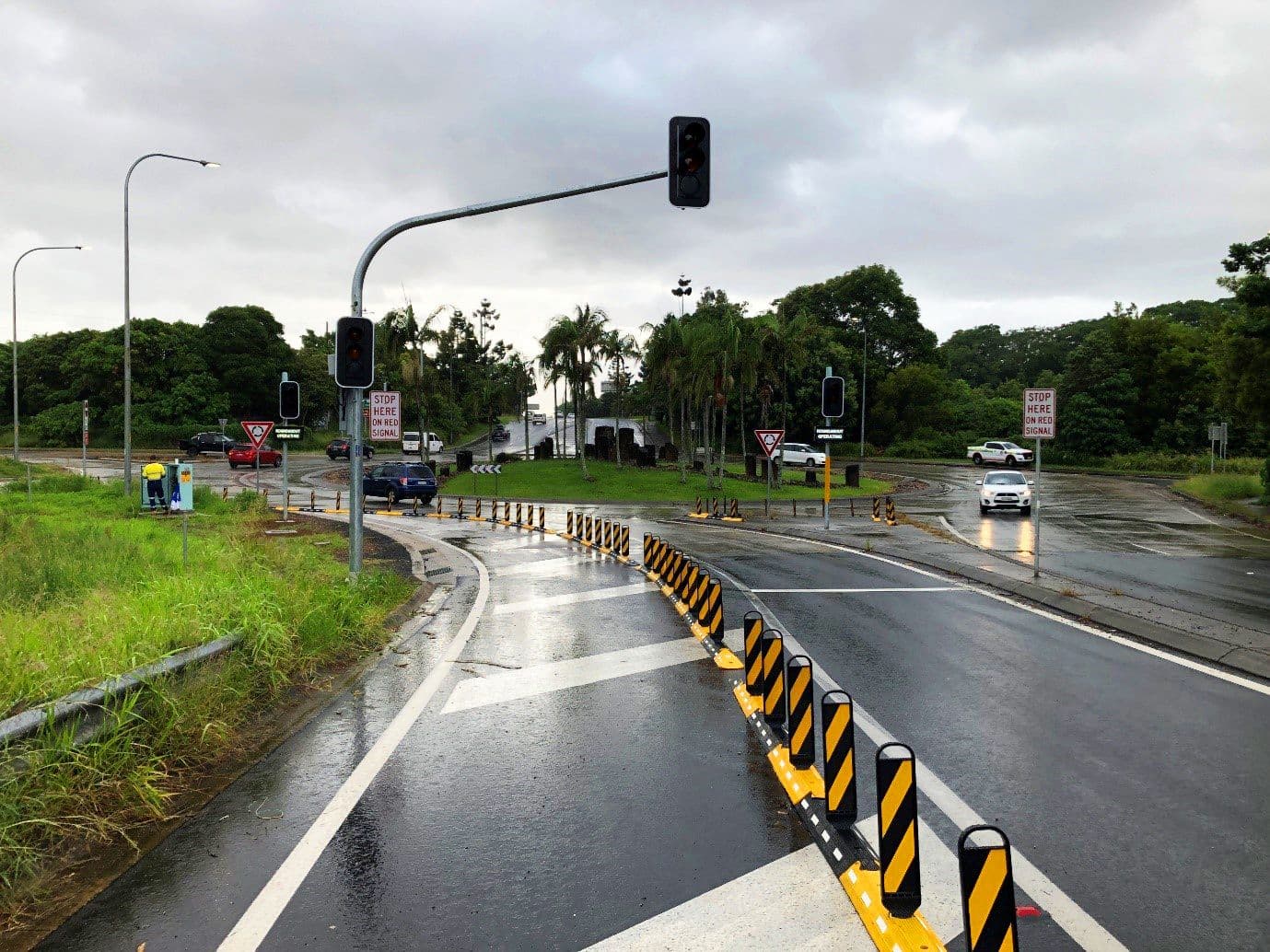4 Ways to Use Flexible Traffic Separators

Traffic separator systems are ideal for separating lanes using a series of highly visible delineation panels or bollards, combined with a tough rubber median strip. Systems such as the Versikerb are regularly used to perform a wide range of road traffic management duties from lane separation to the prevention of corner cutting. They can also be used for tidal flow schemes as a moveable median unit.
Traffic separators are a great solution for separating lanes or road areas. They can help deter vehicles from changing lanes or crossing the midline. They can be fixed semi-permanently or laid loose for temporary delineation situations.
Here’s our top 4 ways to use them on site.
1. As an approach treatment to concrete barrier crash cushions
Crash cushions are redirective energy absorbing systems comprised of ‘bays’ that compress under impact to absorb energy and redirect out of control vehicles. They are frequently used to prevent vehicles from impacting the end of a concrete barrier. They act as a shock absorber, diffusing the impact of out of control vehicles.
Flexible traffic separators such as the Versikerb can be installed as a collapsible delineator bollard system ahead of crash cushions such as the TAU-II and Absorb 350.
When used as an approach treatment, they provide an additional level of alert to motorists ahead of the rigid structure of a crash cushion.
2. Permanent lane separation in high risk areas
Lane separation devices are used to discourage lateral movement or drifting into other lanes. They are often used in ‘black spot’ areas or where additional hazards exist, or where regular pavement markers are inadequate.
Lane separators such as collapsible delineators and flexible bollards can create an additional level of awareness for motorists, discouraging them from moving into other lanes. They draw attention to the dividing line where it is not 100% clear.
3. Temporary lane separation during road works
When road markings have changed temporarily due to road works, flexible traffic separators can act as a highly visible lane separation indicator for motorists.
These are used to help direct traffic in the right direction where the usual line markings on the road may have changed temporarily. Road markings may have changed to create room for machinery and barriers within the site, or to change the flow of traffic around a work site.
Once the job is over, the flexible traffic separators can then be removed and the road restored to its original condition.
4. As a tidal flow system for constantly changing traffic load
Tidal flow systems are a way to boost the capacity of the road system by allowing for flexible lane allocation. This means more lanes are allocated to the heaviest traffic flow at certain times of the day. Each lane direction is dynamic rather than fixed and is changed in response to increased load. This decreases congestion and uses the road network more efficiently.
A good example of this is Sydney Harbour Bridge, where an overhead gantry indicates which lanes are east or westbound at different times, depending on traffic load.
All tidal flow schemes require a system to separate the lanes, and collapsible delineator systems can be used for this purpose. Workers can use a specially designed trailer to shift the solid rubber medians modules from one lane to another. Alternatively, workers can manually remove chevron panels or red and white bollards (‘candy bars’) from one section of rubber kerbing and move them to another.
 Sign In
Sign In 







